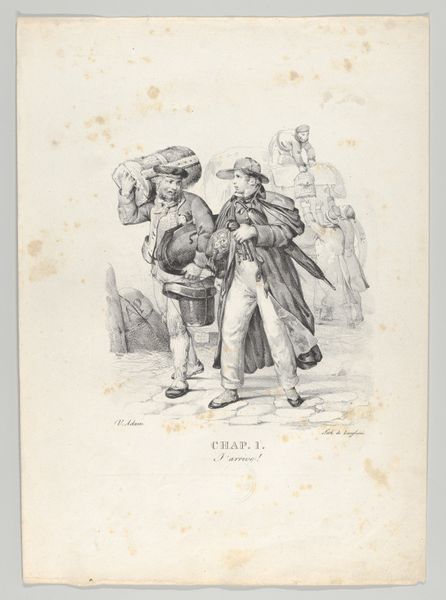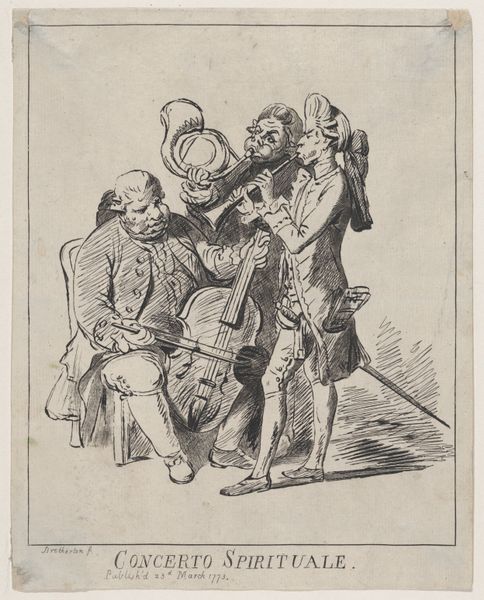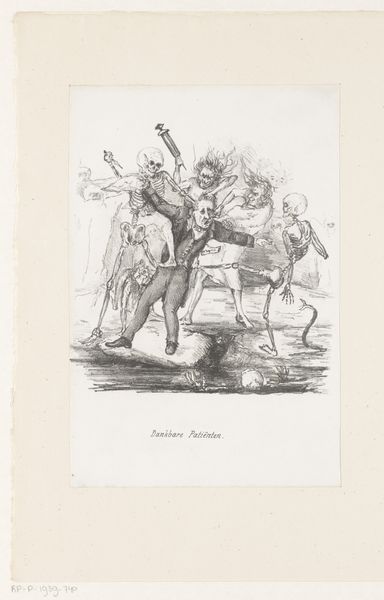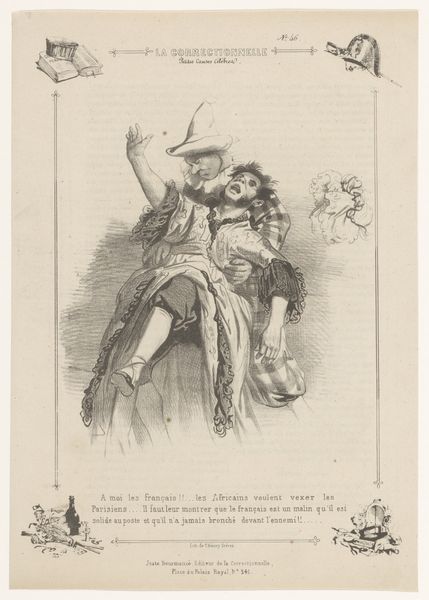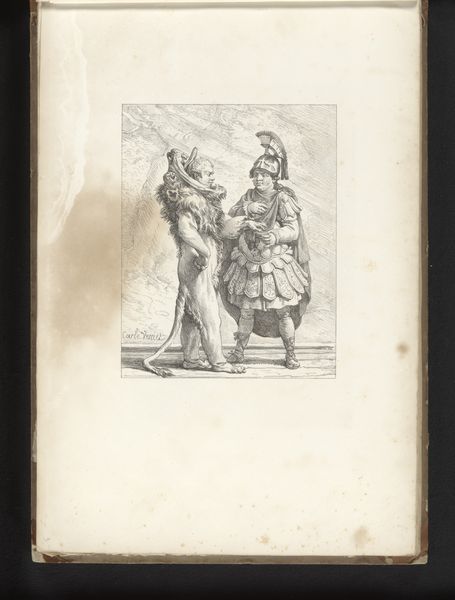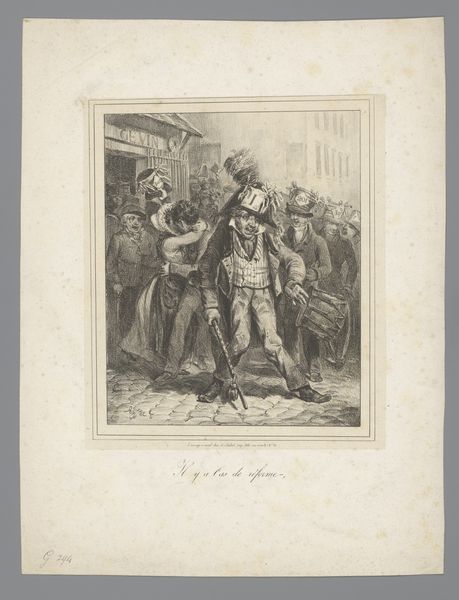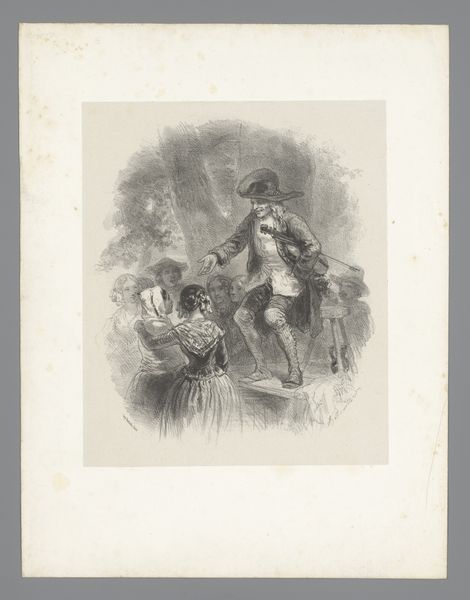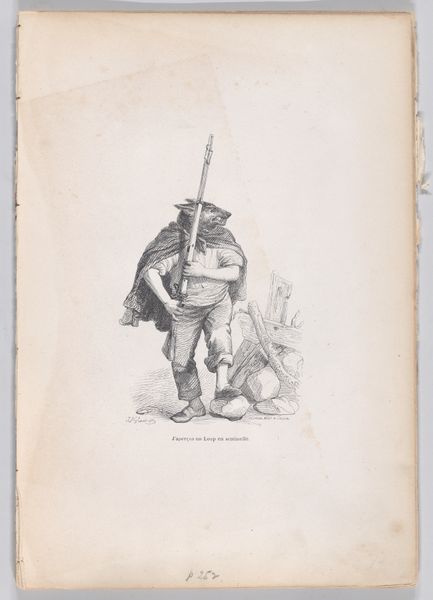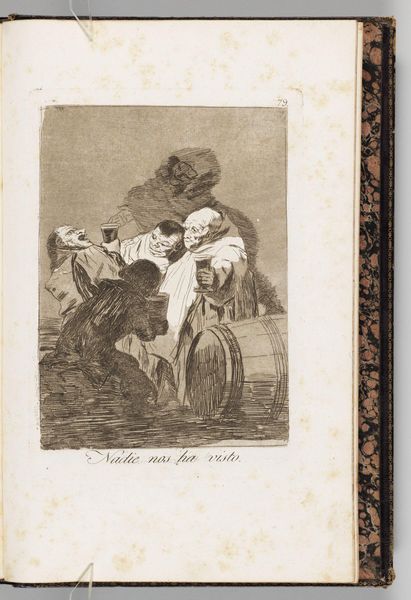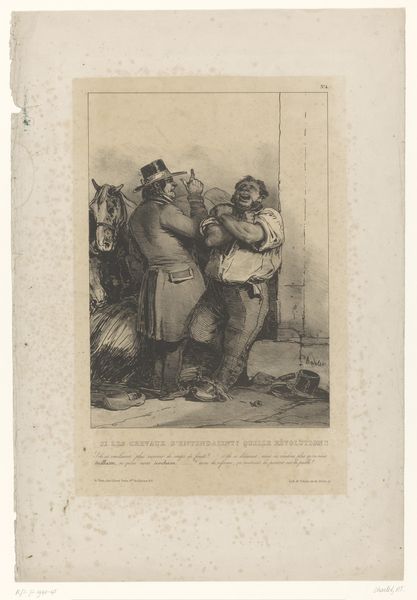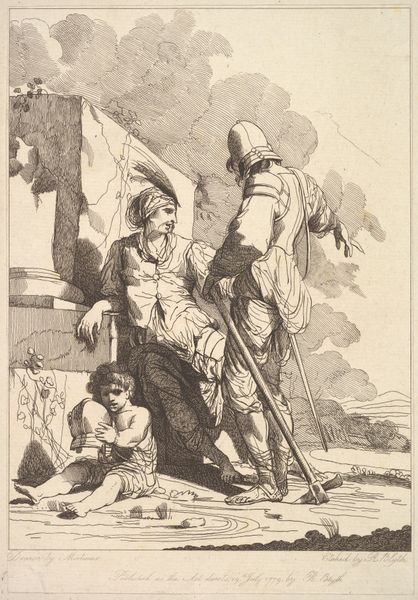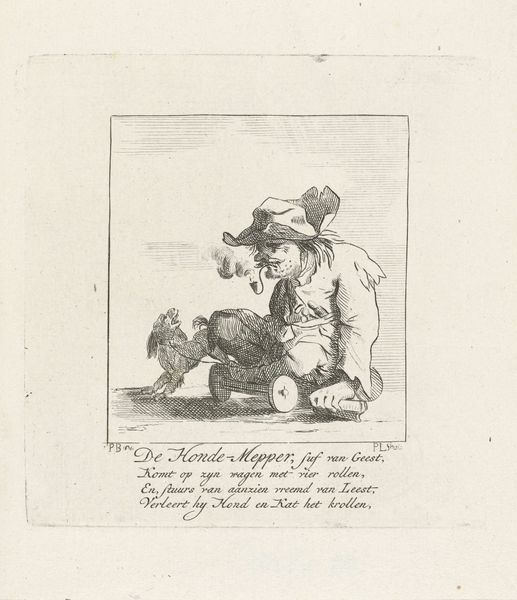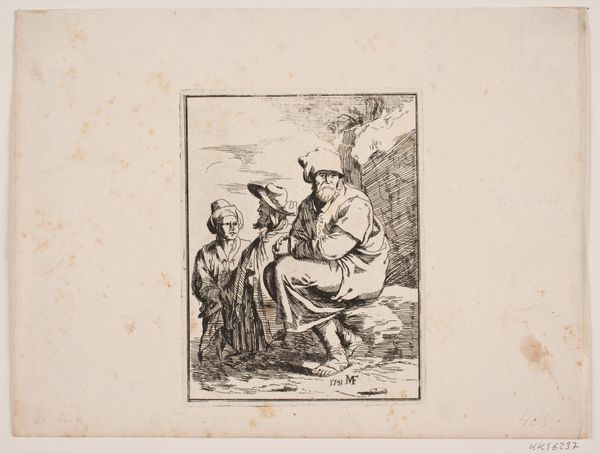
print, woodcut
# print
#
figuration
#
romanticism
#
woodcut
#
history-painting
Dimensions: 120 mm (height) x 91 mm (width) (bladmaal)
Curator: Before us, we have Axel Theodor Kittendorff's "En duel" from 1846, a woodcut now residing at the Statens Museum for Kunst. Editor: It has an immediacy that captivates. You can feel the Romantic pathos and tragedy within it, amplified by the sharp black and white contrasts. The scene is so poignant—what's the story? Curator: The woodcut presents us with the aftermath of a duel. One man, presumably victorious, supports the limp body of his opponent. It speaks volumes about the cultural practice of dueling during this era, often a ritualized, even romanticized, demonstration of honor, which led, in its course, to dramatic violence. Editor: And notice how Kittendorff uses line to create depth. The prone body contrasts with the rigid, upright stance of the victor, heightening our sense of emotional imbalance. The faces are etched with anguish; there's more pain than triumph here, questioning societal obsession with honour. The style is so illustrative. Was the artwork initially designed to circulate publicly as social commentary? Curator: It's certainly suggestive, given the scale and the choice of woodcut, a medium allowing for relatively inexpensive reproduction at that time. The piece serves as a visual archive, embodying a moment fraught with conflicting emotions: pride, regret, loss, all wrapped up within a tradition seen as honorable, as well as cruel. Editor: So many dichotomies for consideration. And consider what Kittendorff is showing the viewer versus omitting. He’s positioned the figures centrally, and included the sword and flask; these visual symbols act as cues for us, hinting at specific types of social practice at the time. The composition almost demands contemplation, doesn't it? Curator: It absolutely does, it draws us in for further scrutiny, questioning our preconceptions. The implications are rich: exploring masculine identity, social conflict, and, of course, the consequences of violence when personal ethics confront social expectations. It gives much insight into history, beyond facts. Editor: Precisely. Thank you for this fascinating discussion, as it sheds such needed light upon this remarkable cultural commentary.
Comments
No comments
Be the first to comment and join the conversation on the ultimate creative platform.
